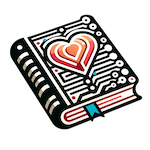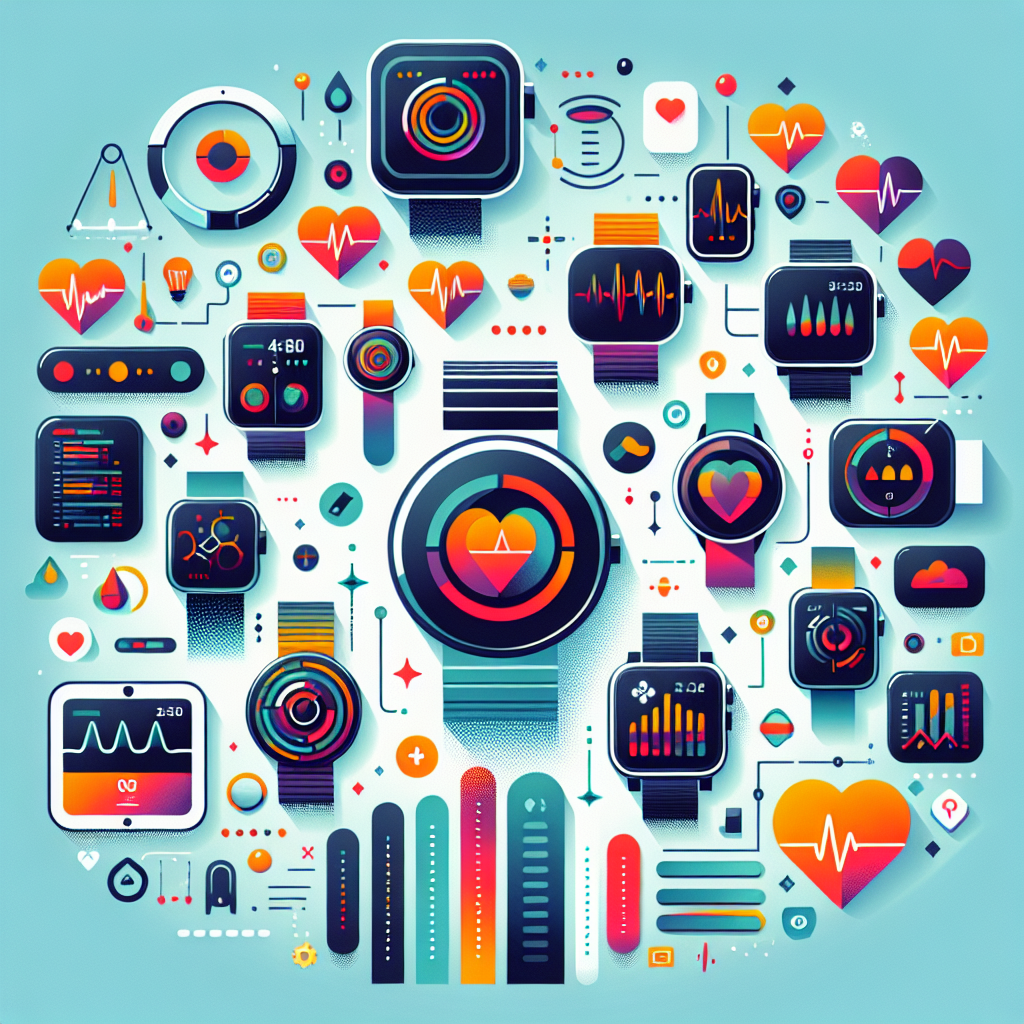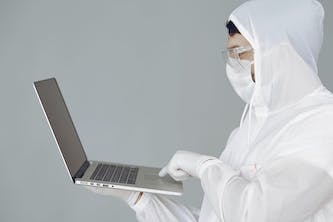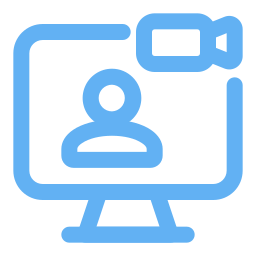Wearable technology, like smartwatches and rings, has become a big part of the health industry. These gadgets say they can track important health information, such as heart rate, sleep quality, and even menstrual cycles. Recently, the UK Health Secretary, Wes Streeting, suggested giving these devices to millions of NHS patients. This would help them keep an eye on symptoms related to treatments, especially for cancer. However, many healthcare experts are not sure if the data from these devices is reliable or useful.
One interesting story shows how wearables can be helpful. A person used a smart ring that noticed they had a higher temperature and were not sleeping well, which could mean they were getting sick. At first, they ignored the warning, but later they ended up with gastric flu. This raises an important question: can the information from wearables help doctors diagnose and treat patients better? Some brands, like Oura, let users share their health data with their doctors, but opinions on how helpful this data is can differ among medical professionals.
Dr. Jake Deutsch, who advises Oura, thinks that data from wearables can improve health assessments. On the other hand, Dr. Helen Salisbury, a doctor in Oxford, warns that people shouldn’t rely too much on these devices. She mentions that while some patients are starting to bring their wearables to their appointments, the information they provide might not always be helpful. Dr. Salisbury is also concerned that many people using wearables could lead to increased anxiety about their health, as they might feel they need to see a doctor for small changes in their data.
Another issue is the accuracy of wearable technology. Dr. Yang Wei, who studies wearable tech, explains that many things can affect how reliable the data is. For example, wearables might not always keep track of vital signs because of battery life, and movement can mess up the data. Plus, there isn’t a global standard for the sensors and software used in these devices, which can cause differences in data quality. Even with these challenges, there is still a chance to use wearable data in healthcare, but it will require a strong tech system and trained professionals to make sense of the information.
Original news source: Why are doctors wary of wearables? (BBC)
🎧 Listen:
Slow
Normal
Fast
📖 Vocabulary:
| 1 | wearable | Technology that you can wear on your body |
| 2 | gadgets | Small electronic devices or tools |
| 3 | symptoms | Signs or indications of a condition or disease |
| 4 | diagnose | To identify a disease or condition from its signs |
| 5 | assessments | Evaluations or judgments about something |
| 6 | appointments | Scheduled meetings with a doctor or other expert |
| 7 | anxiety | A feeling of worry or nervousness |
| 8 | accuracy | The correctness or precision of something |
| 9 | vital | Extremely important or necessary |
| 10 | sensors | Devices that detect or measure physical properties |
| 11 | software | Programs and other operating information used by a computer |
| 12 | reliable | Dependable and trustworthy |
| 13 | professionals | People with specialized knowledge or skills |
| 14 | treatments | Medical care given to a patient for an illness or injury |
| 15 | standard | A level of quality or requirement that is accepted as normal |
Group or Classroom Activities
Warm-up Activities:
– CHARADES
Instructions: Students will act out different wearable technology devices (e.g., smartwatch, fitness tracker, smart ring) without speaking. The rest of the class will guess which device is being portrayed. This activity encourages vocabulary recognition and speaking skills.
– OPINION POLL
Instructions: Students will be given a set of statements related to wearable technology (e.g., “Wearable tech improves personal health management”). They will move to different areas of the classroom to express their agreement or disagreement with each statement. This activity promotes discussion and opinion expression.
– MIND MAP
Instructions: In small groups, students will create a mind map centered around the topic of wearable technology. They should include branches for benefits, drawbacks, and examples of devices. This visual activity helps students organize their thoughts and vocabulary.
– FUTURE PREDICTIONS
Instructions: Students will discuss in pairs or small groups what they think wearable technology will look like in the next 10 years. They should consider advancements in technology, health implications, and societal changes. This activity encourages critical thinking and future-oriented discussion.
– VOCABULARY PICTIONARY
Instructions: Students will draw key terms from the article (e.g., “health data,” “smartwatch,” “accuracy”) on the board while their teammates guess the word. This activity promotes vocabulary recall and visual literacy.
🤔 Comprehension Questions:
1. What types of health information can wearable technology track?
2. How did the smart ring help the person mentioned in the article?
3. What suggestion did UK Health Secretary Wes Streeting make regarding wearable devices?
4. Why are some healthcare experts unsure about the reliability of data from wearables?
5. What concerns does Dr. Helen Salisbury have about patients using wearable technology?
6. How can wearable technology potentially improve health assessments, according to Dr. Jake Deutsch?
7. What factors can affect the accuracy of the data collected by wearable devices?
8. What is needed to effectively use wearable data in healthcare, according to the article?
Go to answers ⇩
🎧✍️ Listen and Fill in the Gaps:
Wearable technology, like smartwatches and rings, has become a big part of the health industry. These gadgets say they can track (1)______ health information, such as heart rate, sleep (2)______, and even menstrual cycles. Recently, the UK Health Secretary, Wes Streeting, suggested giving these devices to millions of NHS patients. This would help them keep an eye on symptoms (3)______ to treatments, especially for (4)______. However, many healthcare experts are not sure if the data from these devices is reliable or useful.
One interesting story shows how wearables can be helpful. A person used a smart ring that (5)______ they had a higher temperature and were not sleeping well, which could mean they were getting sick. At first, they ignored the warning, but later they ended up with (6)______ flu. This raises an important question: can the information from wearables help doctors diagnose and treat patients better? Some brands, like Oura, let users (7)______ their health data with their doctors, but opinions on how helpful this data is can differ among medical (8)______.
Dr. Jake Deutsch, who advises Oura, thinks that data from (9)______ can improve health assessments. On the other hand, Dr. Helen Salisbury, a (10)______ in Oxford, warns that people shouldn’t rely too much on these (11)______. She mentions that while some patients are starting to bring their wearables to their appointments, the information they provide might not always be helpful. Dr. Salisbury is also concerned that many people using wearables could lead to increased anxiety about their health, as they might feel they need to see a doctor for (12)______ changes in their data.
Another issue is the accuracy of wearable technology. Dr. Yang Wei, who (13)______ wearable tech, explains that many things can affect how reliable the data is. For example, wearables might not always keep track of (14)______ signs because of battery life, and movement can mess up the data. Plus, there isn’t a global standard for the sensors and software used in these devices, which can cause differences in data quality. Even with these (15)______, there is still a chance to use wearable data in (16)______, but it will require a strong tech system and trained professionals to make sense of the information.
Go to answers ⇩
💬 Discussion Questions:
Students can ask a partner these questions, or discuss them as a group.
1. What is your opinion on wearable technology? Do you think it’s useful or just a trend?
2. How would you feel if your school gave you a smartwatch to track your health?
3. Do you like the idea of sharing your health data with doctors? Why or why not?
4. What is a health symptom that you think is important to track?
5. Have you ever ignored a warning from a device or app? What happened?
6. Do you think people rely too much on technology for their health? Why or why not?
7. How would you feel if you received a warning from a wearable device that you were getting sick?
8. What is a health issue you think wearable technology could help with?
9. Do you think the benefits of wearable technology outweigh the risks? Why?
10. How do you feel about the idea that using wearables could increase anxiety about health?
11. What is your experience with any health apps or devices? Did you find them helpful?
12. Do you think there should be a standard for the accuracy of wearable technology? Why?
13. How would you feel if you had to rely on a device to tell you when to see a doctor?
14. What is a feature you wish wearable technology had that it currently doesn’t?
15. Do you think it’s important for young people to learn about health technology? Why or why not?
Individual Activities
📖💭 Vocabulary Meanings:
Match each word to its meaning.
Words:
1. wearable
2. gadgets
3. symptoms
4. diagnose
5. assessments
6. appointments
7. anxiety
8. accuracy
9. vital
10. sensors
11. software
12. reliable
13. professionals
14. treatments
15. standard
Meanings:
(A) Programs and other operating information used by a computer
(B) The correctness or precision of something
(C) A level of quality or requirement that is accepted as normal
(D) Medical care given to a patient for an illness or injury
(E) Technology that you can wear on your body
(F) Signs or indications of a condition or disease
(G) Scheduled meetings with a doctor or other expert
(H) A feeling of worry or nervousness
(I) People with specialized knowledge or skills
(J) Evaluations or judgments about something
(K) To identify a disease or condition from its signs
(L) Small electronic devices or tools
(M) Extremely important or necessary
(N) Devices that detect or measure physical properties
(O) Dependable and trustworthy
Go to answers ⇩
🔡 Multiple Choice Questions:
1. What is the main purpose of wearable technology in the health industry?
(a) To replace doctors
(b) To entertain users
(c) To track important health information
(d) To monitor social media activity
2. Who suggested giving wearable devices to NHS patients in the UK?
(a) Dr. Jake Deutsch
(b) Dr. Helen Salisbury
(c) Wes Streeting
(d) Dr. Yang Wei
3. What health issue did the person with the smart ring experience?
(a) Heart attack
(b) Diabetes
(c) High blood pressure
(d) Gastric flu
4. What concern does Dr. Helen Salisbury have about wearable technology?
(a) They are too expensive
(b) They are always accurate
(c) They can replace medical professionals
(d) People may become anxious about their health
5. According to Dr. Yang Wei, what can affect the reliability of wearable data?
(a) Battery life and movement
(b) The color of the device
(c) The brand of the device
(d) The user’s age
6. What does Dr. Jake Deutsch believe about wearable data?
(a) It is not useful at all
(b) It can improve health assessments
(c) It is only for fitness enthusiasts
(d) It should be ignored
7. What is a potential benefit of sharing health data from wearables with doctors?
(a) Increased costs for patients
(b) Better diagnosis and treatment
(c) More appointments needed
(d) Less communication with doctors
8. What is a challenge mentioned regarding wearable technology?
(a) Lack of global standards for sensors and software
(b) Too many people using them
(c) They are too heavy to wear
(d) They only work in certain countries
Go to answers ⇩
🕵️ True or False Questions:
1. A case study showcased how a smart ring failed to alert a user to a potential illness due to inaccurate temperature readings and sleep tracking.
2. Concerns have been raised that using wearables could lead to increased anxiety about health issues among users.
3. The accuracy of wearable technology can be affected by factors like battery life and user movement, and there is no universal standard for the sensors and software used in these devices.
4. Dr. Jake Deutsch is skeptical of how wearable data can improve health assessments, while Dr. Helen Salisbury encourages reliance on these devices.
5. These devices can track various health metrics, including heart rate, sleep quality, and menstrual cycles.
6. Many healthcare experts are confident about the reliability and usefulness of data collected from wearable devices.
7. Wearable technology, such as smartwatches and rings, is not growing in popularity within the health industry.
8. The UK Health Secretary, Wes Streeting, proposed giving wearable devices to millions of NHS patients to monitor their health.
Go to answers ⇩
📝 Write a Summary:
Write a summary of this news article in two sentences.
Check your writing now with the best free AI for English writing!
Writing Questions:
Answer the following questions. Write as much as you can for each answer.
Check your answers with our free English writing assistant!
1. What are some health information that wearable technology can track?
2. Why did the UK Health Secretary suggest giving wearable devices to NHS patients?
3. What are the concerns that some healthcare experts have about the data from wearables?
4. How did the smart ring help the person mentioned in the article?
5. What challenges do researchers face when it comes to the accuracy of wearable technology?
✅ Answers
🤔✅ Comprehension Question Answers:
1. What types of health information can wearable technology track?
Wearable technology can track health information such as heart rate, sleep quality, and menstrual cycles.
2. How did the smart ring help the person mentioned in the article?
The smart ring noticed that the person had a higher temperature and was not sleeping well, which indicated they might be getting sick.
3. What suggestion did UK Health Secretary Wes Streeting make regarding wearable devices?
Wes Streeting suggested giving wearable devices to millions of NHS patients to help them monitor symptoms related to their treatments, especially for cancer.
4. Why are some healthcare experts unsure about the reliability of data from wearables?
Some healthcare experts are unsure because the data may not always be reliable or useful, and there isn’t a global standard for the sensors and software used in these devices.
5. What concerns does Dr. Helen Salisbury have about patients using wearable technology?
Dr. Salisbury is concerned that patients might rely too much on the data from wearables and feel anxious about their health, leading them to seek medical help for small changes in their data.
6. How can wearable technology potentially improve health assessments, according to Dr. Jake Deutsch?
Dr. Jake Deutsch believes that data from wearables can provide better insights for health assessments and help doctors understand their patients’ conditions more effectively.
7. What factors can affect the accuracy of the data collected by wearable devices?
Factors that can affect accuracy include battery life, movement, and the lack of a global standard for the sensors and software used in the devices.
8. What is needed to effectively use wearable data in healthcare, according to the article?
To effectively use wearable data in healthcare, a strong tech system and trained professionals are needed to interpret and understand the information.
Go back to questions ⇧
🎧✍️✅ Listen and Fill in the Gaps Answers:
(1) important
(2) quality
(3) related
(4) cancer
(5) noticed
(6) gastric
(7) share
(8) professionals
(9) wearables
(10) doctor
(11) devices
(12) small
(13) studies
(14) vital
(15) challenges
(16) healthcare
Go back to questions ⇧
📖💭✅ Vocabulary Meanings Answers:
1. wearable
Answer: (E) Technology that you can wear on your body
2. gadgets
Answer: (L) Small electronic devices or tools
3. symptoms
Answer: (F) Signs or indications of a condition or disease
4. diagnose
Answer: (K) To identify a disease or condition from its signs
5. assessments
Answer: (J) Evaluations or judgments about something
6. appointments
Answer: (G) Scheduled meetings with a doctor or other expert
7. anxiety
Answer: (H) A feeling of worry or nervousness
8. accuracy
Answer: (B) The correctness or precision of something
9. vital
Answer: (M) Extremely important or necessary
10. sensors
Answer: (N) Devices that detect or measure physical properties
11. software
Answer: (A) Programs and other operating information used by a computer
12. reliable
Answer: (O) Dependable and trustworthy
13. professionals
Answer: (I) People with specialized knowledge or skills
14. treatments
Answer: (D) Medical care given to a patient for an illness or injury
15. standard
Answer: (C) A level of quality or requirement that is accepted as normal
Go back to questions ⇧
🔡✅ Multiple Choice Answers:
1. What is the main purpose of wearable technology in the health industry?
Answer: (c) To track important health information
2. Who suggested giving wearable devices to NHS patients in the UK?
Answer: (c) Wes Streeting
3. What health issue did the person with the smart ring experience?
Answer: (d) Gastric flu
4. What concern does Dr. Helen Salisbury have about wearable technology?
Answer: (d) People may become anxious about their health
5. According to Dr. Yang Wei, what can affect the reliability of wearable data?
Answer: (a) Battery life and movement
6. What does Dr. Jake Deutsch believe about wearable data?
Answer: (b) It can improve health assessments
7. What is a potential benefit of sharing health data from wearables with doctors?
Answer: (b) Better diagnosis and treatment
8. What is a challenge mentioned regarding wearable technology?
Answer: (a) Lack of global standards for sensors and software
Go back to questions ⇧
🕵️✅ True or False Answers:
1. A case study showcased how a smart ring failed to alert a user to a potential illness due to inaccurate temperature readings and sleep tracking. (Answer: False)
2. Concerns have been raised that using wearables could lead to increased anxiety about health issues among users. (Answer: True)
3. The accuracy of wearable technology can be affected by factors like battery life and user movement, and there is no universal standard for the sensors and software used in these devices. (Answer: True)
4. Dr. Jake Deutsch is skeptical of how wearable data can improve health assessments, while Dr. Helen Salisbury encourages reliance on these devices. (Answer: False)
5. These devices can track various health metrics, including heart rate, sleep quality, and menstrual cycles. (Answer: True)
6. Many healthcare experts are confident about the reliability and usefulness of data collected from wearable devices. (Answer: False)
7. Wearable technology, such as smartwatches and rings, is not growing in popularity within the health industry. (Answer: False)
8. The UK Health Secretary, Wes Streeting, proposed giving wearable devices to millions of NHS patients to monitor their health. (Answer: True)
Go back to questions ⇧













